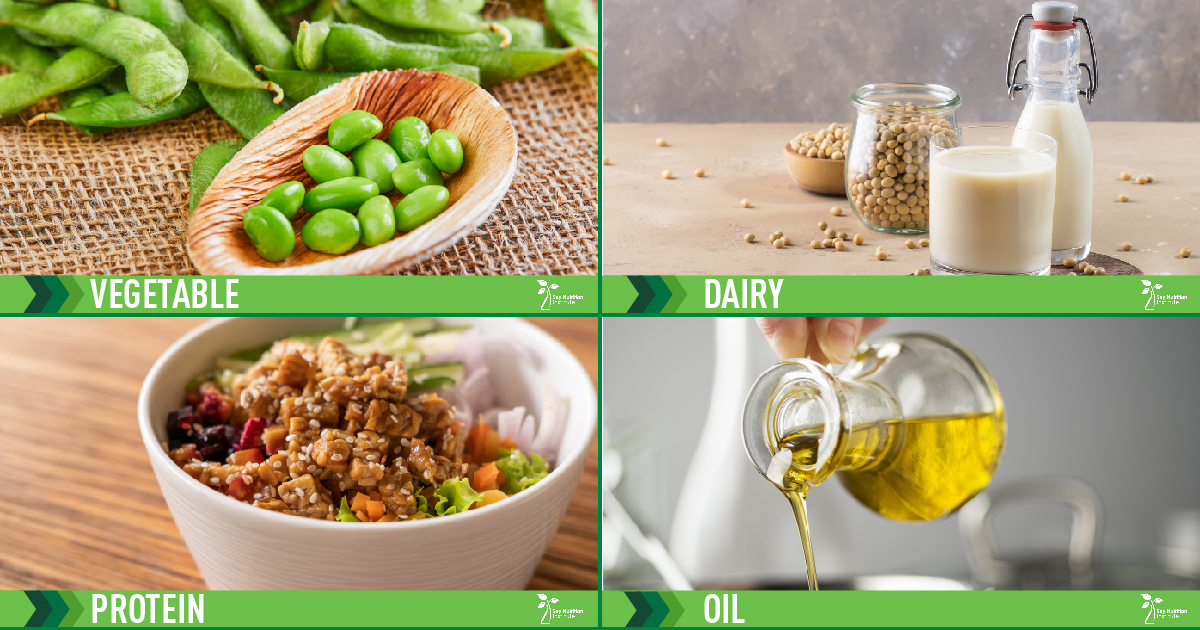The recently released 2020-2025 Dietary Guidelines for Americans set forth recommendations to “make every bite count.” Consumption of soyfoods is recommended throughout the new guidelines.
The 2020-2025 Dietary Guidelines encourage healthy eating by focusing on meeting nutritional needs throughout life with a dietary pattern that includes nutrient-dense foods and beverages. The Dietary Guidelines outline 3 healthy dietary patterns: U.S.-style, vegetarian, and Mediterranean-style. The guidelines recognize that soyfoods fit into all 3 patterns. The Dietary Guidelines define 6 core elements that make up a healthy dietary pattern: vegetables, fruits, grains, dairy, protein foods, and oils.1
Notably, soy was included in the vegetables, dairy, protein foods, and oils elements.
- Vegetables: Both edamame and soybeans are included in the vegetable subgroup “beans, peas, and lentils.” Because of their nutrient profiles, the foods in this subgroup may be counted toward one’s recommended intake of vegetables or protein.
- Dairy: In the dairy group, fortified soy beverages and soy yogurt are the only non-dairy plant milk alternatives considered to be a dairy equivalent and, therefore, can contribute to meeting the dairy recommendation while also supporting fluid intake to help prevent dehydration.1
- Protein foods: Soyfoods including tofu, tempeh, and products made from soy flour, soy protein isolate, and soy concentrate are all included in the protein category. The Dietary Guidelines recommend consuming soy protein products each week.1
- Oils: Oils, including soybean and vegetable oil, are included in a healthy dietary pattern because they provide essential fatty acids. The Dietary Guidelines recommend consuming oils higher in polyunsaturated and monounsaturated fats including vegetable and soybean oil (which is commonly labeled as vegetable oil) in place of fats higher in saturated fat.
The Dietary Guidelines provide recommendations for every life stage from infancy through older adulthood, including pregnancy and lactation. It is important to follow a healthy dietary pattern through each stage of life to avoid deficits and overconsumption of nutrients that are considered a public health concern. The Dietary Guidelines suggest underconsumption of calcium, potassium, dietary fiber, and vitamin D to be of concern for the general U.S. population.1 Depending on a person’s stage of life, there may also be additional nutrients of concern.
For example, in the first year of life, there are concerns of underconsumption of iron, zinc, protein, vitamin D, choline, and potassium. During the second year, concerns shift to vitamin D, calcium, dietary fiber, and potassium. There is also a concern of overconsumption of added sugars and sodium.1 Children and adolescents, especially ages 14-18 years, have low intake of phosphorus, magnesium, and choline. This situation is caused by a diet lacking in nutrient-dense foods and high in added sugar, especially sugar-sweetened beverages. Low consumption of protein, iron, folate, and vitamins B6 and B12 is also of concern for adolescent females.1 Adults tend to fall short of the recommendations for the core elements of a healthy dietary pattern leading to the underconsumption of dietary fiber, calcium, and vitamin D. Overconsumption of saturated fat, sodium, and added sugars is also a concern in adulthood in addition to alcoholic beverages.1
The nutrients found in various soyfoods can help address some of these deficiencies. Fortified, unsweetened soymilk provides vitamin D, calcium, and protein while providing hydration as a non-sugar-sweetened beverage. Soy products such as tofu and tempeh are important sources of iron, zinc, protein, and choline.1 Edamame provides fiber while soybean and vegetable oils provide essential fatty acids that are lower in saturated fat. Adding a variety of soy products into the diet is an easy, beneficial way to help meet the requirements for a healthy dietary pattern.
Background on the Dietary Guidelines
The Dietary Guidelines are released every 5 years to provide science-based advice on food and drinks to promote health and prevent disease.1 The 2020-2025 Dietary Guidelines provide guidance for healthy eating at every stage of life from birth through older adulthood and include guidelines for pregnancy and lactation. The Dietary Guidelines are designed to help nutrition and health professionals promote a healthy, nutritionally adequate diet. They are the basis for the development of programs including the National School Lunch Program, National School Breakfast Program, and the Special Supplemental Nutrition Program for Women, Infants, and Children (WIC).
Reference
- U.S. Department of Agriculture and U.S. Department of Health and Human Services. Dietary Guidelines for Americans, 2020-2025. 9th Edition. December 2020. Available at DietaryGuidelines.gov.

Connect with us through our social channels